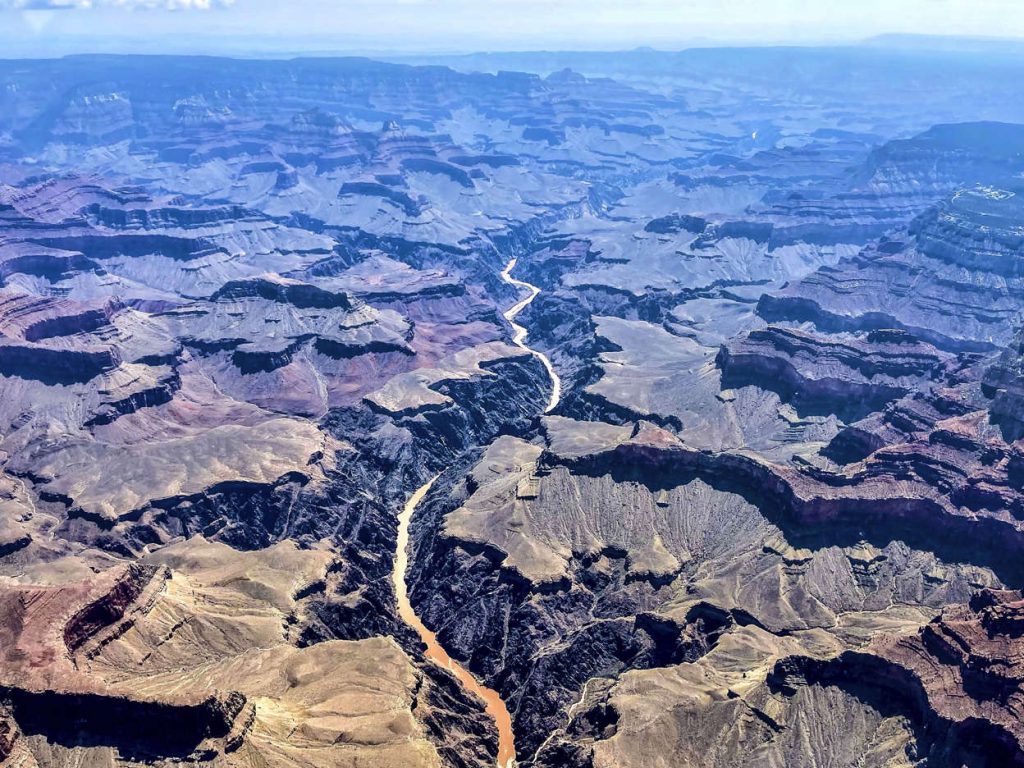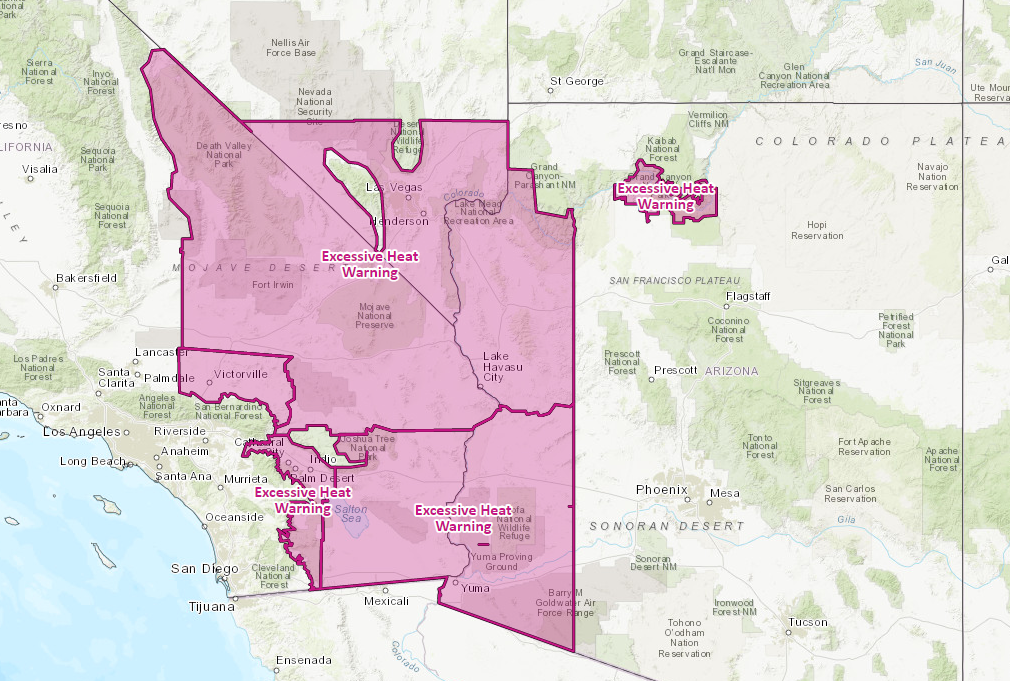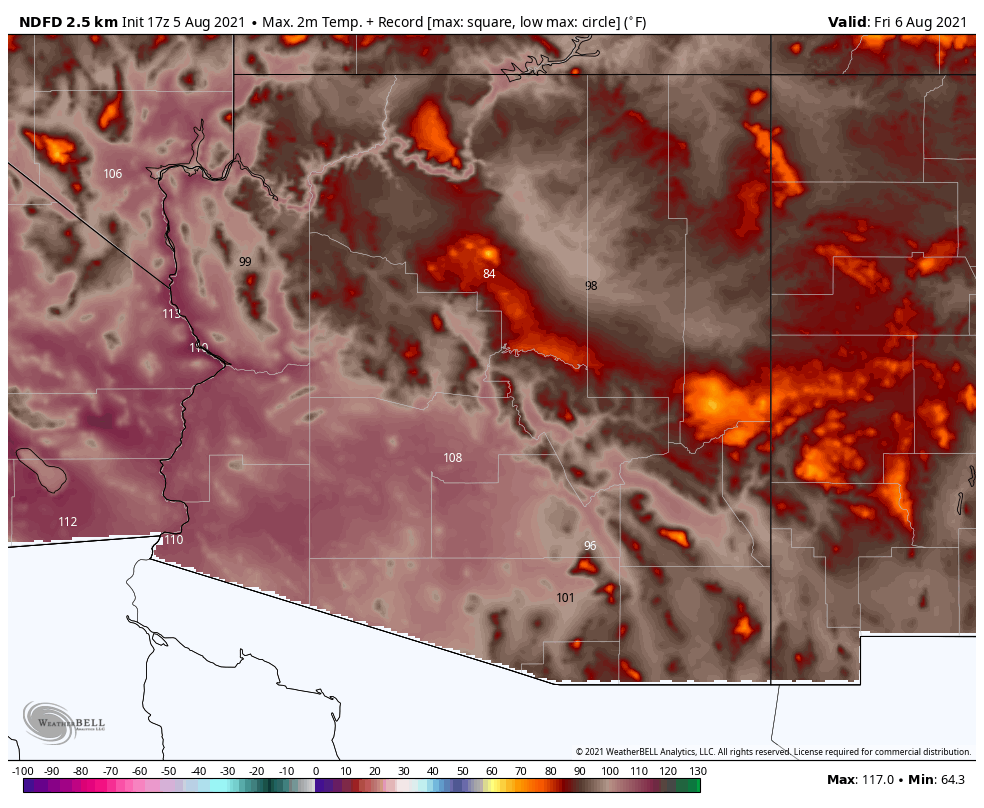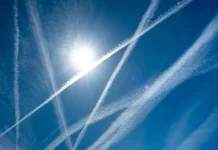
The Grand Canyon is one of the most popular destinations for hikers in the Lower 48. However, meteorologists are warning tourists to avoid the canyon Thursday and Friday. Temperatures near the base of the canyon could approach 115 degrees both days, spurring the issuance of a localized excessive heat warning for only the canyon itself.
The National Weather Service in Flagstaff, Ariz., states that level of warning “is reserved for only the hottest days of the year and is issued when temperatures are expected to rise to dangerous levels.”
Officials are discouraging any physical activity within the canyon between 10 a.m. and 4 p.m. both days. That’s when the hottest and most unforgiving weather is expected.
The Weather Service is especially concerned about hikers descending into the canyon, since the hottest temperatures will be found below 4,000 feet elevation. The canyon has a maximum depth of 6,000 feet.
“Day hikers on Bright Angel Trail should descend no further than 1.5 miles,” wrote the Weather Service. “Hikers should attempt to be out of the canyon and at Indian Garden or Bright Angel Campground between these hours.”

In addition to the heat, wildfire smoke is present within the canyon, exacerbating the health risks for undeterred hikers. The combination of fine particulate matter in the air and extreme heat could, if not taken into consideration, prove deadly. Even at the South Rim, highs will peak around 90 degrees.
“Every year, scores of unprepared hikers, lured by initially easy downhill hiking, experience severe illness, injury, or death from hiking in the canyon,” warns the National Park Service.
They also stated that staffing limitations “efforts to assist you may be delayed” due to call volume, staffing shortages and the inability of helicopters to fly in extreme heat. Hot temperatures make the air less dense, providing less available lift for helicopters.
Excessive heat warnings are not uncommon for the canyon: the last coming on June 2. Last year, the Park Service carried out 235 search and rescue missions, and 13 deaths were reported.
Outside the canyon, highs will peak in the upper 80s to near 90 degrees through the weekend.

Why only the Canyon has excessive heat warning?
It may seem strange that only the Grand Canyon is under an excessive heat warning while other nearby locations aren’t under such an advisory. That’s because the canyon’s depth, and a process called adiabatic compression.
It may sound complex, but it’s actually quite simple: Air pressure is greatest near Earth’s surface, where any pocket of air is supporting the entire weight of the atmosphere. Air is less hefty on top of a mountain, for instance, because it doesn’t have as much atmosphere on top of it. The pressure exerted by a pocket of air balances out the weight of whatever’s above it.
It’s similar in some ways to swimming in a pool. If you dip below the water, you won’t feel much. But if you swim to the deep end and are 10 or 12 feet below the surface, you start feeling the pressure getting to you.
Since the atmosphere is a gas, air that is compressed, or subject to a greater pressure, warms. As one travels higher in the sky, the air pressure drops and, resultantly, it’s cooler.
This works out to roughly a 9.8 degree Celsius per kilometer drop-off in temperature with height in dry environments, or roughly 28.5 degrees Fahrenheit per mile. That’s why, even in the summertime, you might see snow on the tips of mountains.
The South Rim is located at roughly 7,000 feet above sea level; Grandview Point reaches to 7,400 feet. The Colorado River snakes through the Canyon floor below at about 2,200 feet. That’s roughly a mile, give or take, below the highest points. The canyon is up to 18 miles wide.
Let’s assume that air at 88 degrees at the South Rim spills down into the canyon. By the time it makes it approximately 4,800 feet to the bottom, it will have warmed about 25.9 degrees, yielding a temperature of 113.9 degrees. That’s exactly what the National Weather Service is predicting on Friday — a high of 88 degrees at the South Rim, and “dangerously hot … temperatures up to 114 expected” in the canyon.
Since there is no moisture for the air to tap into, it also becomes bone dry by the time it reaches the canyon floor — relative humidity values could drop to just 9 percent. That’s sufficient to sneakily dehydrate any hiker. When it’s humid, your sweat clings to you. In dry environments, you sweat more, but it evaporates, dehydrating you in a hurry.
Not the first time but rare
It’s not the first time heat alerts have been issued specifically for canyons. On July 18, 2018, a small heat advisory was issued for Palo Duro Canyon east of Amarillo, Tex.
Amarillo sits at 3400 feet, but Palo Duro Canyon at 2300 feet. The 100-degree air near adjacent Plainview, Tex., warmed 6.13 degrees through adiabatic compression as it sank to the canyon floor. That left the air above the 105-degree threshold needed for a heat advisory.
How to explain the hot weather around the Grand Canyon?
The hot weather around the Grand Canyon is being supplied by a strong ridge of high pressure or heat dome, underneath which the air is compressed and warmed.
The heat dome was responsible for several daily record highs in the Southwest desert Wednesday, including 121 degrees in Needles, Calif. While not record-breaking, Phoenix and Death Valley soared to scorching highs of 115 and 126.
Much of western Arizona, southern Nevada and the deserts of interior Southern California are set to roast with highs in the 110 degree plus range likely in the coming week.
Excessive heat warnings blanket the region and are in effect through Friday, though signs point to another potent heat dome becoming established by early next week.
Now subscribe to this blog to get more amazing news curated just for you right in your inbox on a daily basis (here an example of our new newsletter).
You can also follow us on Facebook and/ or Twitter. And, by the way you can also make a donation through Paypal. Thank you!
You should really subscribe to QFiles. You will get very interesting information about strange events around the world.














Cellphone popped a severe flash flood warning last night. The last severe weather alert storm was awesome. Last night was dry lightning mostly. A spritz, and not much else. It was mid 90°s daytime, and around 1600 hrs. the monsoon clouds + thunder floated through. Mountain weather changes rapidly.
My Bartlett pear tree has about 15 pears now. I love the monsoons when they drop some inches. Low lying basins and washes can be deadly if you drive around. We still have mini lakes pooled up 1200′ below my zone.
It’s bad for some folks. They had to evacuate a really nice area where some Mormon folks have ranches.
My area is about one hour from GC where the heat warning is in effect. You learn to love it, good and bad. Lightning looks like artillery shells going off at night. It’s fun to watch storms. I could do it forever.
Be safe out there.
Heat stroke is no joke. Been in 122° and worked in 118° heat. It sneaks up on you. Be advised, hydrate, and work slowly. Even experienced hikers can be overcome.
Vehicles don’t like hill climbs in that heat either, so carry fluids, a survival bag, and nutrition. In the event your vehicle becomes diabled by blown head gasket, or transmission failure, and your cellphone is out of range.
Be smart, people.
One more thing, get a first aid kit. You are the first responder in an emergency. If rescue can’t use helicopters, then it will be an extended ETA.
Take a first aid and CPR course. It’s good for you, and your loved ones.
Watch out for rattlesnakes. When it gets hot, they go for shade, and it might be near your campsite. Harder to see in the shade too, especially when you go from bright sunlight into a shaded area. Your eyes need to adjust, and do that first, so you don’t step on a rattlesnake.
Don’t be hiking in uneven terrains with your sneakers. Get some proper hiking boots. I have old redwings and danners. My boots may be older than most of you too.
Bring extra socks if your feet sweat. Last thing you need is blisters and sore feet impeding your progress on uneven terrain.